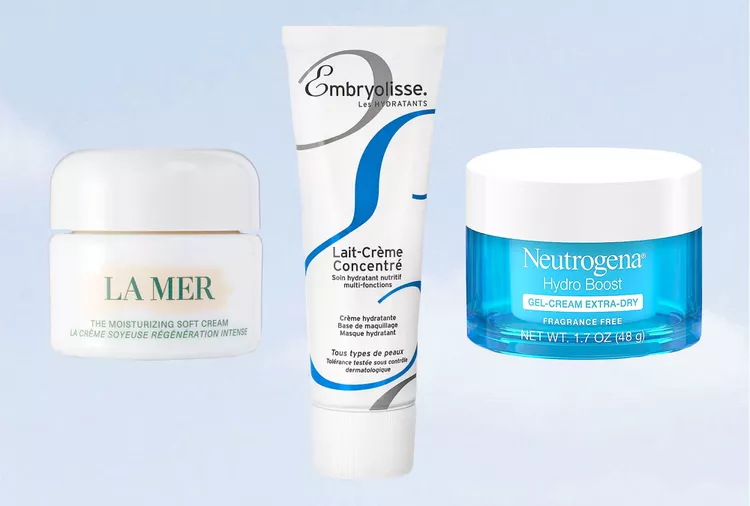/
PUBLISHED ON 2023/09/09 at 6:31 AM
The 10 Best Facial Moisturizers of 2023, Tested & Reviewed
With skin-loving picks from brands like SkinCeuticals, Tatcha, and more
We independently evaluate all recommended products and services. If you click on links we provide, we may receive compensation.

Our Top Picks

Our Ratings
- Feel 5/5
- Absorption 5/5
- Wear 5/5
- Hydration 5/5
- Appearance 4.8/5
What We Like
- Silky, whipped consistency
- Softening, hydrating
- Great for most skin types
What We Don't Like
- Can be too waxy and heavy for very oily skin types
One tube of the iconic Embryolisse Laid Crème Concentré sells every five seconds around the world, and after trying it out during testing, we can see why. This one product cleanses, hydrates, nourishes, and protects the skin on both the face and the body—and poses the question “What doesn’t this thing do?”
The formula—which has been a best-seller since the ‘50s—contains several natural-origin active ingredients, like shea butter, beeswax, soy proteins, and aloe vera, each of which works in tandem to combat skin concerns like dryness, irritation, and redness. One squeeze of the tube deposits a lovely whipped cream that melts on contact with the skin, which we experienced firsthand. The brand recommends applying a small amount of the product onto clean, damp skin post-cleanse to really lock in moisture and get the full effects of the creamy elixir. This super-rich cream is a great example of an occlusive, which Levine says can soothe and hydrate the skin. “These types of formulas create a protective film that traps moisture into the skin, softening and hydrating it in the process,” she adds.
It performs nicely on all skin types, but it might be a smidge too thick for very oily or acne-prone skin types.
Price at time of publish: $29
Ingredients: Shea butter, soy proteins | Size: 2.54 fl. oz.

Our Ratings
- Feel 5/5
- Absorption 5/5
- Wear 5/5
- Hydration 5/5
- Appearance 4.8/5
What We Like
- Hyaluronic acid boosts moisture
- Absorbs quickly
- Non-greasy, lightweight texture
What We Don't Like
- Added fragrance may irritate skin
FAQ
What’s the difference between facial moisturizer and body lotion?
Not all moisturizers are made the same, and that’s certainly the case when it comes to facial creams and the type of lotion you’d slather all over your body. According to Lancer, body moisturizers are usually heavier than face moisturizers and contain ingredients like butters, oils, and more, that are too heavy for the face (and can cause unwanted breakouts). Garshick explains that facial moisturizers tend to absorb easier and are normally formulated to be non-comedogenic to prevent clogged pores and breakouts. “In some cases, facial moisturizers can contain ingredients to help address signs of aging or other concerns,” Garshick adds.
What is the difference between humectants, emollients, and occlusives?
Do you need to use a separate sunscreen if your moisturizer has SPF?
Why Trust Byrdie
For this story, Caitlyn Martyn relied on her experience as a beauty writer, product reviewer, and skincare lover. She utilized tester and editor insights to get a holistic view of each product.
She also spoke to experts to discuss what to look for when selecting facial moisturizers. Experts she spoke to included:
- Dr. Marisa Garshick , a board-certified dermatologist
- Dr. Marisa Garshick , a board-certified dermatologist
- Dr. Marisa Garshick , a board-certified dermatologist






